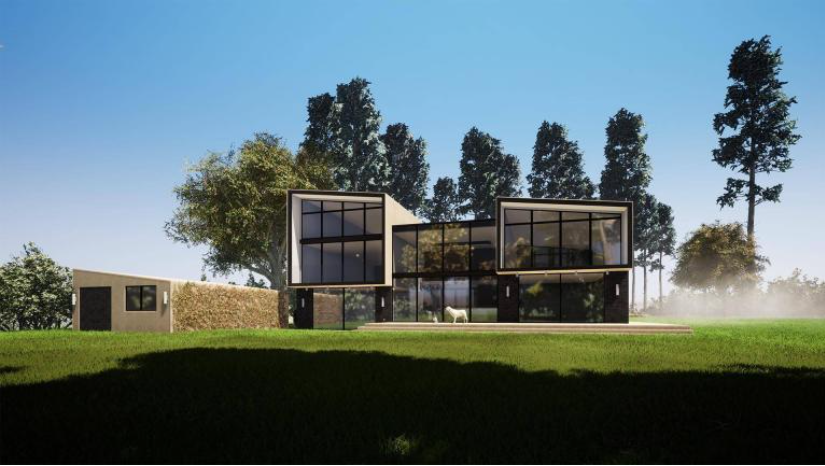Consumers care about sustainability. Even amidst a global cost of living crisis, many are still willing to part with more of their money if they know they’re buying environmentally and ethically sustainable products.
In one study, three quarters of consumers said that sustainability is up there as one of their main concerns when making a purchase. In another, more than 60% of shoppers said they’d pay more for a product with sustainable packaging. So, how are businesses keeping up with consumer demand for more sustainable design?
Well, they’re getting more creative when it comes to keeping up with these demands and meeting wider corporate sustainability objectives – whether that’s through launching more environmentally friendly products, exploring creative packaging solutions, or trying out new design approaches and technologies.
Here’s a look at four sustainable design trends taking off this year:
1. Personal devices designed to be repaired
There’s a saying that goes “buy once, buy well,” and in the case of expensive electronics items, consumers are increasingly leaning towards choosing goods with longer lifecycles or ones that can be repaired easily. Over half of those in a recent survey chose to repair an item instead of replacing it, and over a third paid extra for a more durable or longer lasting product.
This approach is not only better for the wallet, but it’s also better for the environment. Did you know that the European Environmental Bureau estimates that by extending the lifetime of everyday household goods such as washing machines, vacuum cleaners and smartphones in the EU by just one year will save around four million metric tons of carbon dioxide emissions annually by 2030?
Products like HMD’s Nokia G22 repairable smartphone is a great example of sustainable designs emerging to help tackle the issue. Owners of the new smartphone will be able to get their hands on replacement parts, such as the screen, battery and charging port, as well as the tools and guides to fix the phone themselves. Everything has been designed so that the repairing process is pretty straightforward too. HMD claims it will take around five minutes to swap the removable battery and around 20 minutes to replace the screen.
2. Packaging becomes more sustainable
Almost half of the plastic still being generated today is used for packaging. Yet as demand continues to soar for more recyclable and renewable packaging solutions, retailers and manufacturers are increasingly exploring how they can use materials such as paper and cardboard in place of plastics. Think 100% recyclable paperboard coffee cup lids and cardboard protecting filler instead of polystyrene.
Companies like Finnish paperboard manufacturer Metsä Board have long touted the benefits of using paperboard packaging over plastics, but also recognize that even more can be done to optimize how this renewable material is used. Every year, Metsä Board produces 1.3 million tons of folding boxboard – the equivalent to 160 million cereal boxes per day.
While the company has already earned a reputation for being a sustainable leader, it’s constantly striving to do more with less. One of the ways it’s doing this is by using advanced simulation technologies to virtually test innovative new packaging solutions that use less material, yet still withstand challenging conditions.
“Our advanced testing capabilities enable us to recommend lighter board grades with a smaller carbon footprint,” said Markku Leskelä, vice president of research and product development at Metsä Board. “We can also improve functionality, recyclability and brand impact, ensuring that we maximize the performance of the packaging.”
READ MORE: How virtual twins power Metsä Board’s sustainable design
3. Circular economy practices enter architecture
Ever wondered what historic landmarks like the Eiffel Tower would look like if they had been designed and constructed by modern-day architects and builders using the most innovative materials and technologies? That’s exactly what the Building Tomorrow initiative set out to do. It brought together a team of industry experts and gave them access to cutting-edge sustainable design, simulation and virtual twin technology on the 3DEXPERIENCE platform to recreate a new tower based on circular economy principles.
It’s hopefully a sign of things to come as businesses like KREOD and Bright Dream Robotics (BDR) drive innovation and embrace digital transformation to help the architecture, engineering and construction industry become more efficient, sustainable and productive.
With KREOD’s digital architecture solutions on top of the 3DEXPERIENCE platform, engineers can obtain all the data they need from a building design to plan and price an entire project. While BDR’s fuchsia pink construction robots carry out everything from painting walls to turning concrete waste on site into new building materials.

4. Eco-design thinking gains traction
It was once estimated that a product’s design determines 80% of its environmental impact throughout its entire lifecycle. Indeed, as the International Institute for Sustainable Development explained: “Good design not only makes products easier, more comfortable and safer to use, it also involves decisions about the materials from which they are made and, often, their projected life-span – key factors in how these products will affect our environment.”
Businesses increasingly realize they must integrate eco-design into their product development right from the very beginning. That involves considering everything from the materials and the production methods they use, all the way through to how the product will be managed once it has reached the end of its intended purpose.
These principles lie at the heart of Dassault Systèmes’ think tank and consultancy DESIGNStudio, responsible for innovative, sustainable design concepts such as the sleek yet robust Newron EV-1 motorcycle and the regenerating art installation AURORA.
Want to find out more about the future of sustainable design? Head to the DESIGNStudio site and listen to the podcast.

